Our VIP tent seminar at the Catalunya Championship
David Bataller organized a seminar in the VIP tent behind the 18th green on Thursday morning during the Catalunya Championship.

We had to keep our voices down, at times, because the players were right in front of us during the seminar.
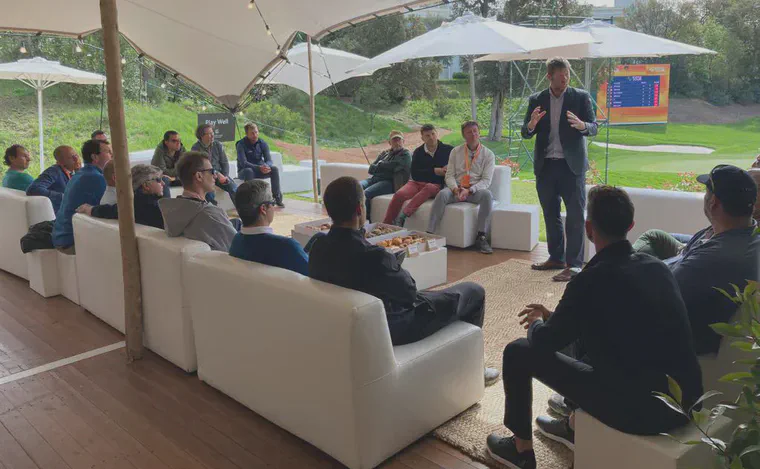
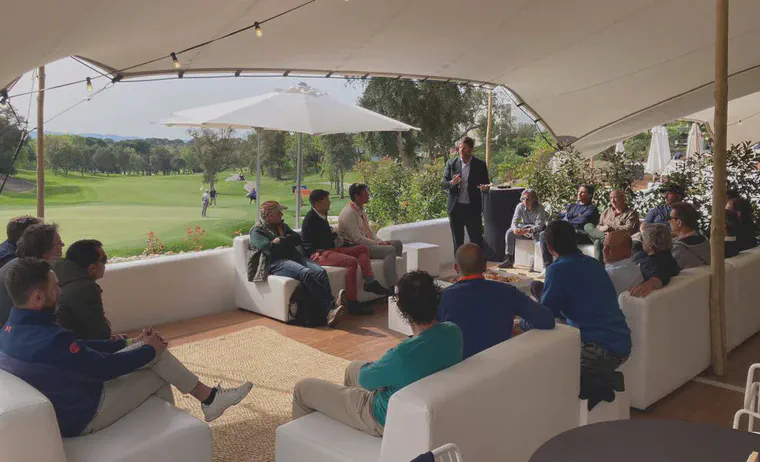
This is a fine location for a seminar, and David invited many superintendents, agronomists, and architects from the region to attend the tournament on this day so they could join our seminar.
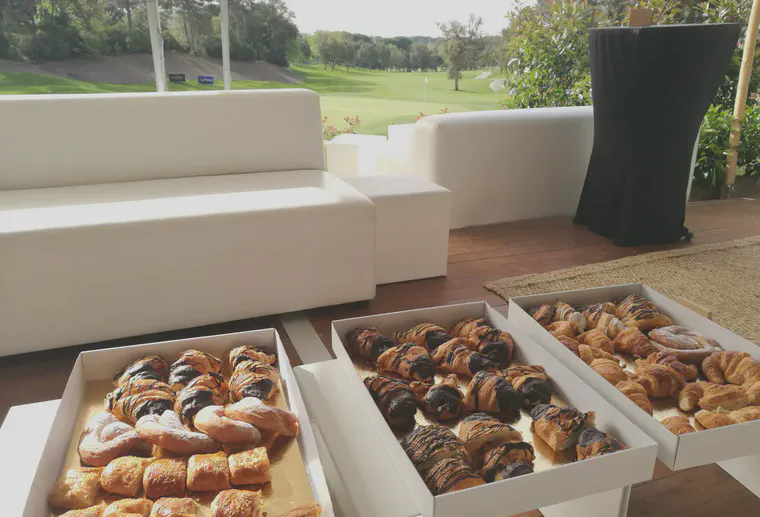
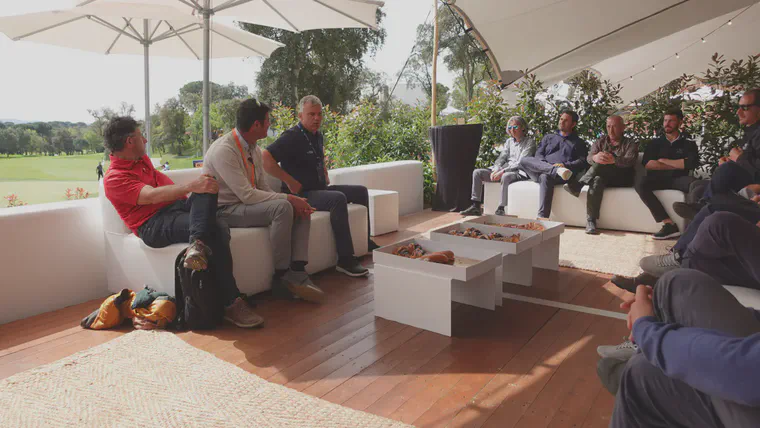
I didn’t prepare slides, instead speaking extemporaneously about some of my recent research and about the work I was doing at the Catalunya Championship. Here’s a summary.
Recent research
OM246
I explained how one of the reasons I got started with OM246 total organic material by depth testing was because of a project at PGA Catalunya in 2015.
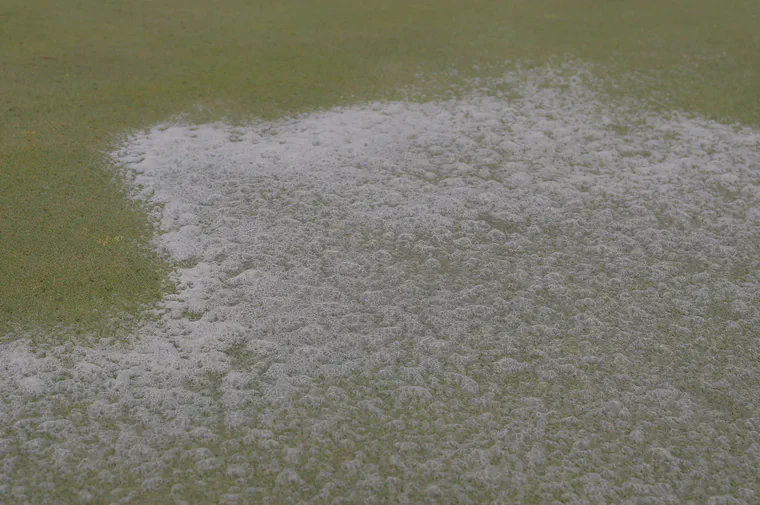
In that project, we (David, Xavi Giol, and me) had been looking at the organic matter at the surface layer of a creeping bentgrass rootzone before and after repeated drenches with H2O2. I wasn’t quite satisfied with the way the samples were tested, because of the passage of the sample at the lab through a 4 mm sieve which seems likely to remove some of the undecomposed plant material prior to testing.
After telling that story, and explaining how the OM246 test is done and how samples are collected, I emphasized two things that I’ve learned from doing this testing.
First, almost all the change in soil organic material in the short term (one growing season type of time frames) happens in the top 2 cm of the rootzone. That’s less than an inch—it’s just right there at the surface.
Second, for samples from all grass types from multiple continents, there is not much change at all in season-long time spans at the deeper depths of 2 to 4 cm and 4 to 6 cm.
For the purpose of managing soil organic matter, it seems that the most important thing to be concerned about is the top 2 cm, and the need to pull organic matter from deeper depths, or add sand to deeper depths, isn’t so clear to me.
Soil nutrient sampling
While we were on the topic of soil testing, I mentioned soil nutrient testing and how I’m intrigued by the simplicity of taking single core samples rather than the typical composite samples.
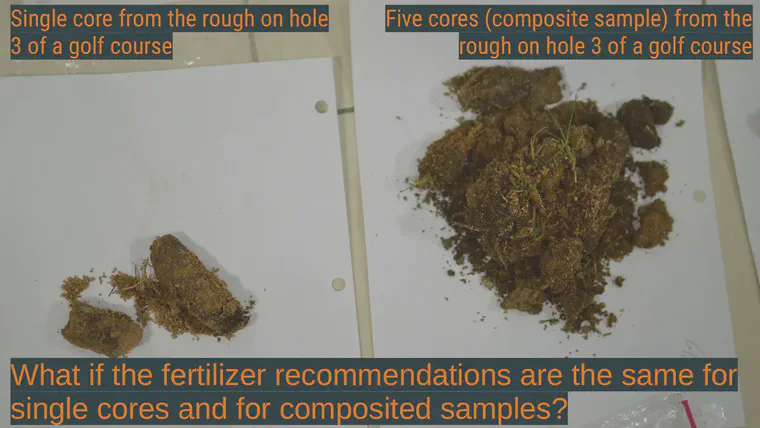
This is something I’ve been checking and re-checking, and I shared the summary of my results so far, which is that a single core sample can result in the same fertilizer recommendation as one would get with composite samples.
Maximizing the number of days with good playability
I then started a segue into what I was doing at the Catalunya Championship in terms of data collection with a mention of my research into playability. For a typical golf course, I recommend making measurements of playability once a week, and importantly, recording them. Measure the green speed on something like three greens; while doing the stimpmeter measurement, check the bobble test score; classify the greens at the same time as too soft, acceptable, or too firm.
The idea is to adjust and organize golf course maintenance activities so that there will be a maximum number of days in the golf season with speed, quality of roll (assessed with the bobble test), and firmness achieving a site-specific threshold.
My measurements at the Catalunya Championship
I went on to explain what I was measuring that week, and how I was doing it.
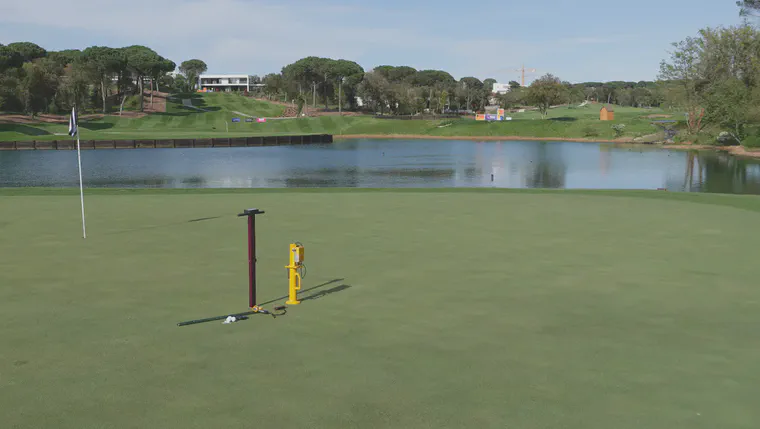
I brought tools to measure soil water content, surface hardness (firmness), ball roll distance (green speed), air temperature and humidity and wind speed, soil temperature, and leaf temperature.
At the start of the week, I selected three greens to intensively measure through the week. On those three greens, I marked three locations (on each green) at which to make stimpmeter and bobble test measurements. This week those three greens were 3, 5, and 18.
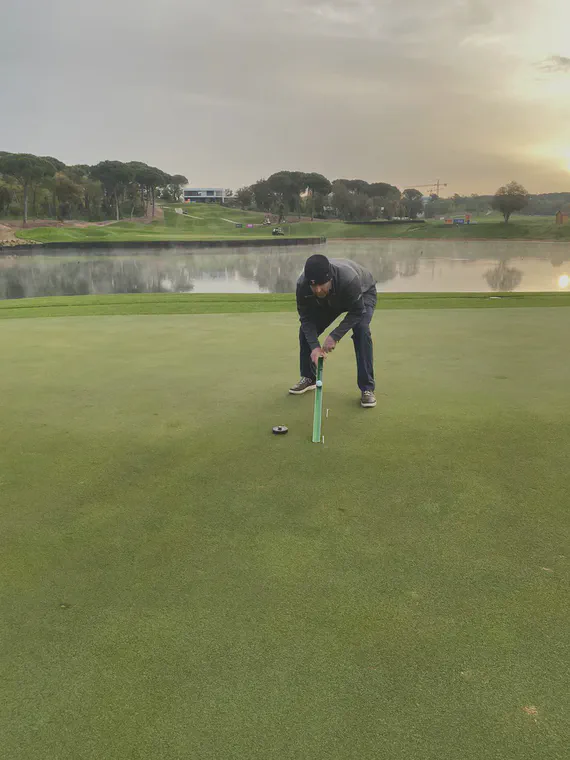
Each morning after work was completed and prior to play, I measured surface hardness (with my favorite tool for this—the 500 g golf course firmness tester with a domed head from SD Instrumentation) at nine locations on those greens, and I measured soil water content with a TDR-350 with 7.5 cm rods.
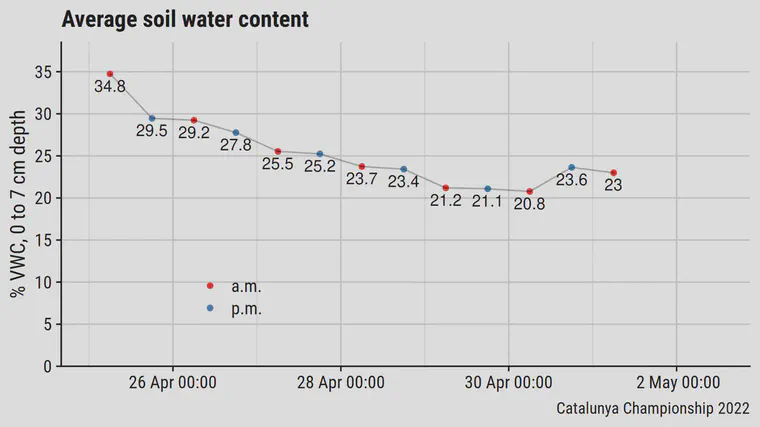
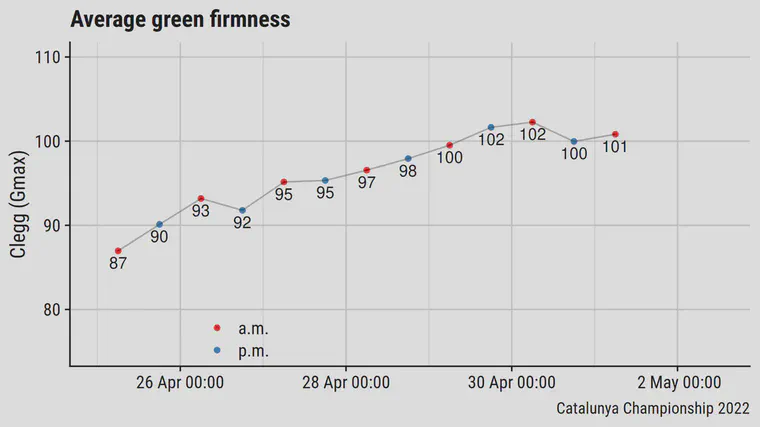
I repeated those measurements after play had ended for the day and before afternoon maintenance work had been conducted on the greens.
These charts show the green speed and bobble test measurements from those three “standard” greens.
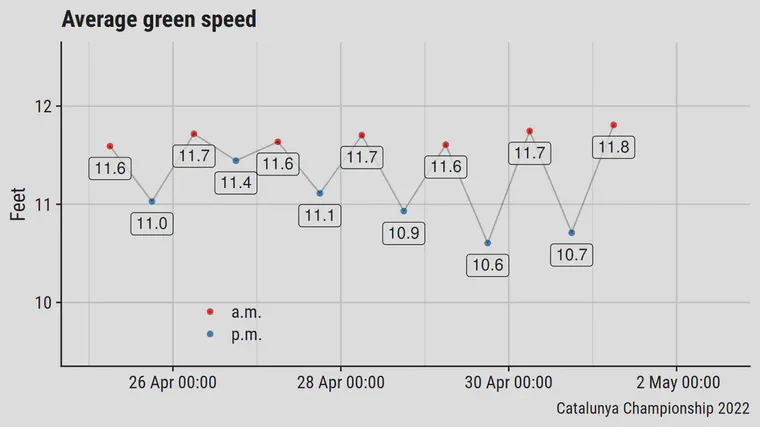
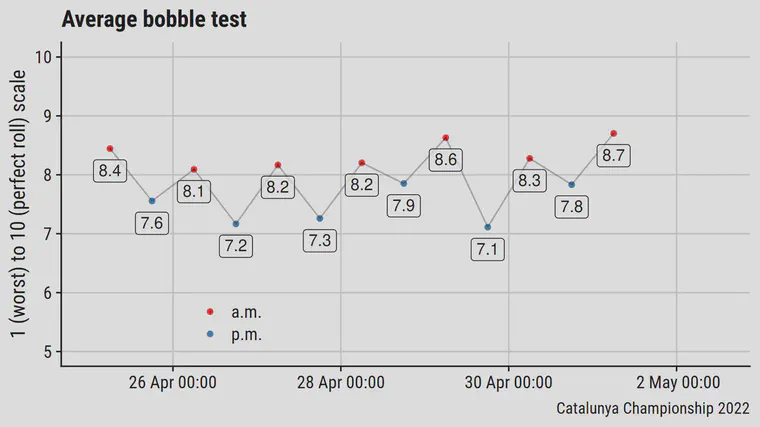
I measured additional greens too, but I don’t include those greens in the the average charts, because changing the greens being measured could distort the average values.
For a look at the conditions and a quick discussion of tournament preparations, have a look at this video with PGA Catalunya Stadium Course superintendent Alfredo Álvarez.